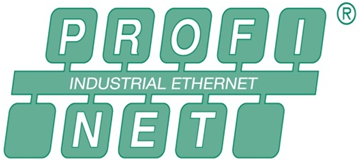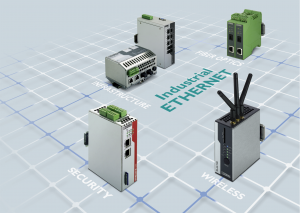In today’s automation technology, Ethernet and information technology (IT) are increasingly calling the shots with established standards like TCP/IP and XML. Integrating information technology into automation opens up significantly better communication options between automation systems, extensive configuration and diagnostic possibilities, and network-wide service functionality. These functions have been integral components of PROFINET from the outset. In addition, the demand for increased productivity of machines and plants while at the same time cutting costs has always been the driving force behind innovations in industrial automation.
PROFINET is the innovative open standard for industrial Ethernet. It satisfies all requirements for automation technology. Whether the application involves factory automation, process automation, or drives (with or without functional safety), PROFINET is the first choice across the board.
PROFINET is specified in IEC 61158 and IEC 61784. The PROFINET concept was defined in close collaboration with end users based on standard Ethernet according to IEEE 802. Additions to standard Ethernet were specified only in cases where requirements could not be met or could not be met satisfactorily with standard Ethernet.
Here are the reasons on why we should use PROFINET in our modern control systems:
1. PROFINET is the communication standard for automation of PROFIBUS & PROFINET International (PI). The many years of experience with PROFIBUS and the widespread use Industrial Ethernet have been rolled into PROFINET. PROFINET has its support from the Control Engineering suppliers (vendors). Equally important as the technical performance data of the communication system is the access to the major control systems. Many control manufacturers such as Phoenix Contact and Siemens have already implemented a PROFINET interface in their devices, thus providing broad support for the protocol and access to many automation solutions in all sectors. Establishment of the proven certification process ensures high standard of quality for PROFINET products and their interoperability in plants.
2. Opening up productivity potential. In order to be able to manufacture economically, the production systems must reach their return on investment (ROI) much earlier than before. To achieve this, it is necessary to substantially reduce the development and engineering costs that account for the major share of the overall costs, and to simply interchange existing solutions in new concepts. The communication structures within a company are thus or decisive influence in opening up new productivity potential. For plant and machine manufacturers, the use of PROFINET minimizes the costs for installation, engineering, and commissioning. For plant owners, PROFINET offers ease of plant expansion and high system availability due to autonomously running plant units and low maintenance requirements.
3. PROFINET plays an important role when it comes to investment protection. PROFINET enables integration of existing fieldbus systems like PROFIBUS, AS-Interface, INTERBUS, Foundation Fieldbus, and DeviceNet, without changes to existing devices. That means that investments of plant operators, machine and plant manufacturers, and device manufacturers are all protected.
4. Key features of PROFINET
- Everything on one cable. With its integrated, Ethernet-based communication, PROFINET satisfies a wide range of requirements, from data-intensive parameter assignment to extremely fast I/O data transmission. PROFINET thus enables automation in real-time. In addition, PROFINET provides a direct interface to the IT Level.
- Flexible installation & network topology. PROFINET is a “switched” network with a transmission rate of 100 Mbps when there is a full duplex connection. PROFINET is 100% Ethernet compatible according to IEEE standards and adapts to circumstances in the existing plant thanks to its flexible line, ring, and star structures and copper and fiber-optic cable solutions. PROFINET networks are able to adapt to communication demands of the application. PROFINET saves on expensive custom solutions and enables wireless communication with WLAN and Bluetooth.
- Scalable real-time. Communication takes place over the same cable in all applications, ranging from simple control tasks to highly demanding motion control applications. For high-precision closed-loop control tasks, deterministic and isochronous transmission of time-critical process data with a jitter of 1µs is possible.
- High availability. PROFINET integrates automatically reacting redundancy solutions and intelligent diagnostic concepts. Acyclic diagnostic data transmission provides important information regarding the status of the network and devices, including a display of network topology. The defined concepts for media and system redundancy increase the plant availability significantly.
- Safety Integrated. The proven PROFIsafe safety technology of PROFIBUS is also available in PROFINET. The ability to use the same cable for standard and safety-related communication saves on devices, engineering, and setup.
- Continuous further development of PROFINET. Since its introduction in 2004, PROFINET technology has been used by numerous companies in all industrial sectors-whether it is a combination with a fieldbus system like INTERBUS or as an independent solution. Besides the technological advantages, this development is based on the fact that more and more device manufacturers are installing a corresponding interface in their products, which offers more, or a selection and less expensive prices.



